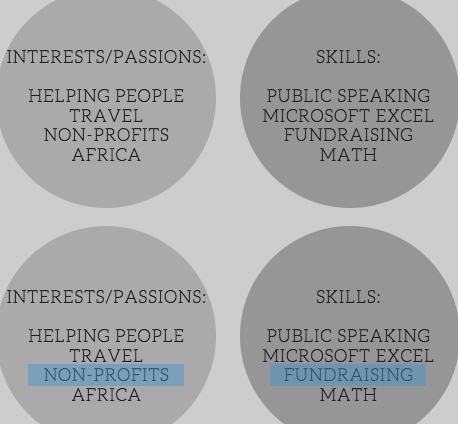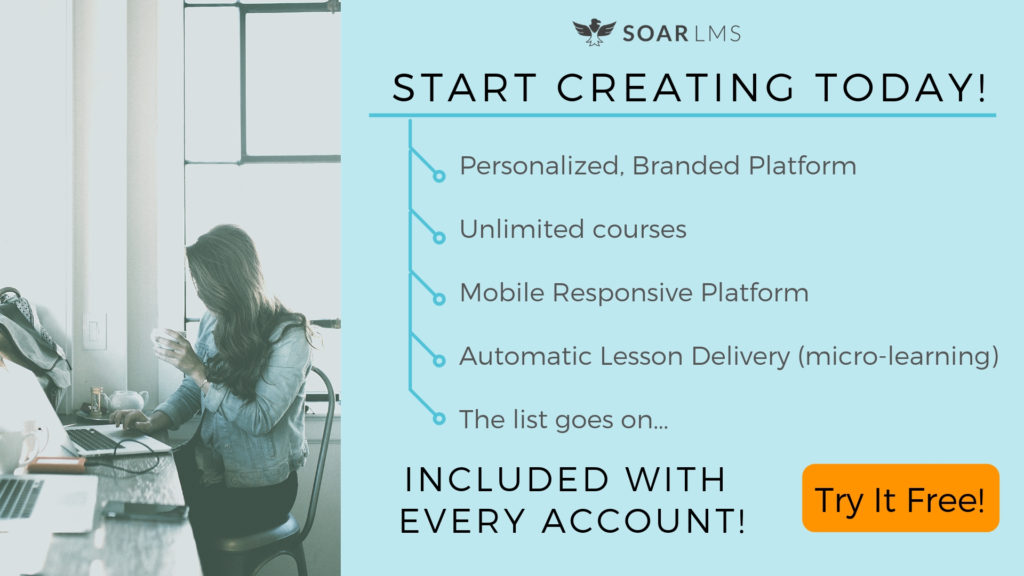Take the 1st Step in Course Creation: Clarifying Your Course Topic
The 1st Step in Course Creation: Clarifying Your Course Topic
If you’re thinking about the freedom of a “remote job” or need a way to multiply yourself because there aren’t enough hours in the day, creating an online course is the way to go! With all that knowledge and experience you have, you could help a lot of people. However, to have the most success, you’ll want a course topic that powerfully resonates with people and makes them want to enroll!
But what should my online course be about?
Your topic can be anything—deep sea diving breathing techniques, cake decorating, jewel cutting—anything in which you have a good amount of experience. You should be able to help students get from point a to point b — and, if you want to sell your course, the topic should be profitable (in demand).
This seemingly tall order can be broken down into four simple steps:
- Identify your sweet spot
- Be the solution
- Do your research
- Decide on your niche
1. How to Identify Your Course Topic Sweet Spot
In my mid-20’s I was figuring out my next career move. My uncle (a gifted facilitator) encouraged me to pursue a job that would give me not only monetary success, but also joy. To help me realize what this was, he shared a simple exercise of three questions with me. This exercise is equally applicable for deciding on a course topic.
Get a pen and some paper, then list your answers to these questions:
- What do you love? (What are your interests, passions? What do you read about in your free time?)
- What are you good at? (What are your skills/gifts? What have you accomplished recently that you’re proud of? What do other people say you’re “good at”?)
- What do people want to know (and invest in)? (What is the demand for right now?)
If helpful, you can draw a diagram like this one.

Right in the middle of this diagram, where all three combine, is the “sweet spot”. Anything that fits all 3 categories is PERFECT for a possible course topic idea!
You may have crossover in several areas. In order to choose, move forward to researching what is most needed out there. If you choose the thing you are most knowledgeable about, your course creation will be much quicker and with high demand, people will be jumping to enroll.
For example, I did this exercise with my friend, Christine, who works for a non-profit and loves to travel to volunteer in other countries. She completed the diagram and decided on the crossover (of interests and skills) of “fundraising for nonprofits”.

Knowing there are a lot of people that would need help with this, we went to find out what the most specific part of fundraising would be great for a course.
2. Do Your Research
Once you have a topic in your sweet spot, you can refine your course focus by digging deeper into the need that is out there.
Start where all research these days starts: with a simple Google search. Do a search for “[your topic] forums”. You can also try “the best [your topic] blogs” or something to that effect.
*Get the full research method in our free 57 page guide, How to Launch a Course That SOARS!
See if the blogs have a “top posts of all time” or “trending posts” section. Write down the posts that answer questions and that you see multiple times on different blogs. These will be great course topics. You will begin to have a well-informed understanding of specific problems people are having.
Bonus: Keep a list of these blogs. You can come back to them later and potentially use them help to market your course.
Once you’ve done some general Googling to find the most commonly talked about specifics of your topic, do a search on social media sites like Facebook or LinkedIn. Find groups about your topic and join them. See what questions people are asking, see what the common issues are. These are all real people, asking real questions, that you might be able to help answer. Answer them in the groups, but also think about which ones could make good courses (or sections within a course).
Once you have gone through this process for your topic, you should have plenty of problems (also known as pain points), that people would be looking for a course to help them solve. Bringing us to our next point:
3. Be the Solution
Okay, you know those problems you just found? Well, guess what? You’re the solution! People find and purchase courses when they are looking for a solution to a current problem.
Your course should offer transformation and take them from the problem to a solution.

If you haven’t already, write down all the possible problems your potential clients might be having. You are going to use this to identify a course focus AND get ideas for other courses.
So back to Christine- after an hour of research she found some main problems for people in the non-profit fundraising area, the top 4 being:
- How do I get started?
- We’ve hit a standstill with our fundraising
- How do I retain donors?
- Technology and systems issues
Next, she comes up with course ideas that would be solutions to those problems.
- Getting started as a new non profit
- Taking your fundraising to the next level
- We can’t seem to retain donors
- Using Quickbooks for non-profits
From her list of solutions, Kim picked the one she knows the most about, donor retention, and went to the next step. She kept this list to refer back to, should she want to create additional courses later.
4. Decide on a Niche/Focus
The most successful courses are those that are specific with their content.
Think about these example courses for Christine’s topic of donor retention:
- Stop losing donors
- 30 days to Doubling your Donor Retention Rates
Course number one is vague (and negative). There are a lot of facets to why donors leave and it doesn’t set a clear target or goal.
Course number two focuses on a specific action and promise. It sets the student up with clear expectations of what they will be learning, and convinces them they should invest if they want that outcome.
There are a number of benefits to keeping your niche small.
- You can more easily establish authority in that area.
- Your course stays streamlined and focused.
- You now have the opportunity to make additional courses in the same subject. These additional courses can lead to additional sales or packaged bundles.
Take Action Today!
Using your experiences and expertise, complete the sweet spot exercise. Then refine that list through researching what solutions are needed to the problems out there. Finally, clarify your niche and come up with a specific course title.
I hope this process gives you a boost and encourages you as find that overlap of your passions and what will become your provision. Once you have a strong direction, you can head to the next step of outlining your course.
Cheers to choosing your course topic!
Start creating today, it’s easy! Start your free trial and see for yourself!


